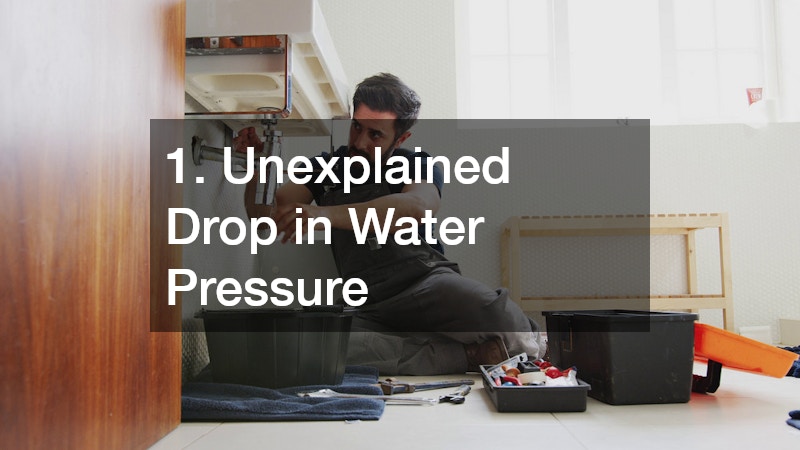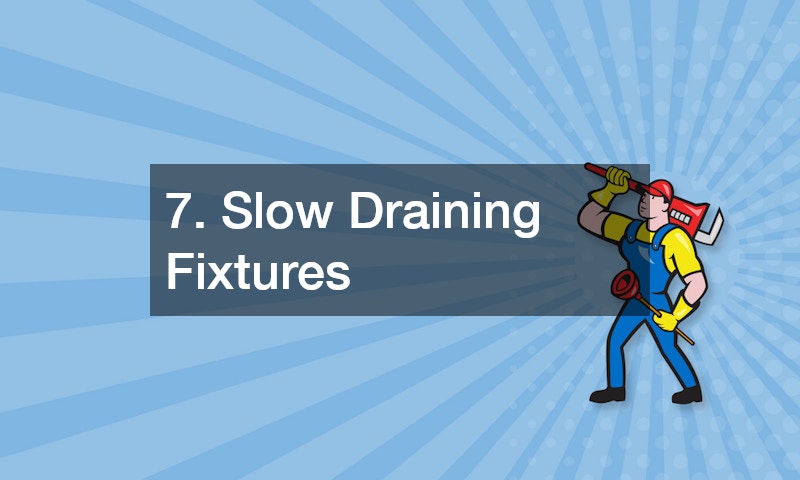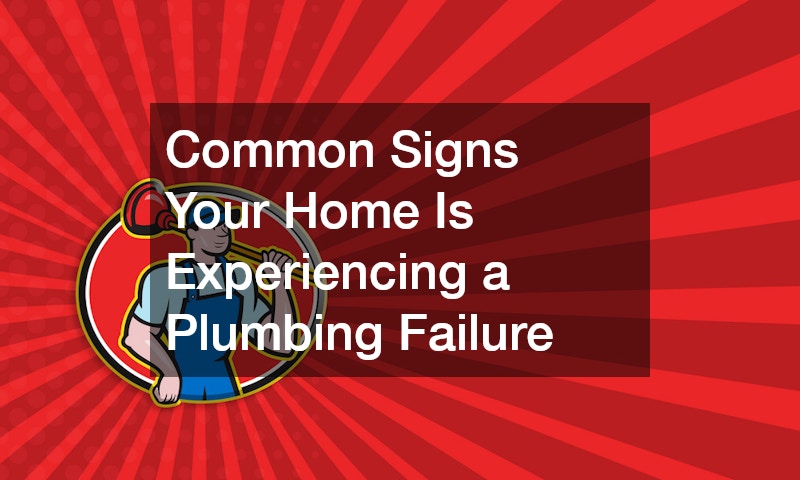Your home’s plumbing system is like the circulatory system of your house—it’s constantly at work, delivering clean water, removing wastewater, and maintaining the essential flow that keeps everything functioning. But just like any other system, plumbing can develop problems. When a plumbing failure occurs, it can disrupt your daily life, create costly damage, and even pose health hazards. The challenge for many homeowners is that plumbing issues often start small and go unnoticed until they’ve become much bigger, more expensive problems.
Being able to identify the early warning signs of a plumbing failure is one of the most valuable skills you can develop as a homeowner. Small leaks, unusual noises, or subtle changes in water pressure can all be indicators that something is wrong. If you address these signs promptly—whether by calling a local plumber, scheduling a sewer inspection, or arranging for professional drain cleaning—you can save yourself a lot of stress, time, and money.
In this comprehensive guide, we’ll explore the most common signs that your home may be experiencing a plumbing failure, why these issues happen, and what you should do about them. Each section will give you practical steps for identifying problems and deciding whether you can take care of them yourself or need to call in a plumbing contractor or local plumbing companies for professional help.

- 1. Unexplained Drop in Water Pressure
- 2. Frequent or Recurring Clogs

- 3. Water Stains on Walls, Ceilings, or Floors
- 4. Strange Noises in the Plumbing System

- 5. Persistent Unpleasant Odors
- 6. Discolored or Rusty Water

- 7. Slow Draining Fixtures
- 8. Unexpected Spikes in Water Bills
- 9. Fluctuating Water Temperatures
- 10. Pooling Water in the Yard
- 11. Mold and Mildew Growth
- 12. Water Backups in Multiple Fixtures
- 13. Leaks Around Water Heaters or Other Appliances
- 14. Green or Wet Spots on Exterior Walls
- 15. Signs of Corrosion on Pipes and Fittings
- 16. Air in the Plumbing Lines
- 17. When to Call in the Professionals
1. Unexplained Drop in Water Pressure
One of the first indicators of a plumbing failure is a sudden or gradual decrease in water pressure. While small variations in pressure can be caused by your municipal water supply, consistent low pressure in your home often points to an internal problem.
Common causes include:
- Sediment buildup in pipes, which narrows the opening and restricts flow.
- Leaks somewhere in your plumbing system, which divert water before it reaches the faucet.
- Issues with your water heater, such as sediment buildup inside the tank.
- A blockage or break in your main water line.
If the problem affects all fixtures, it’s likely an issue in your main supply line or throughout your system. If it’s only in one fixture, the cause might be localized. A plumbing contractor can test your water pressure, trace the problem, and recommend a fix. In some cases, they may suggest a sewer inspection to rule out blockages or damage in lines that could be affecting flow.
2. Frequent or Recurring Clogs
Every homeowner deals with a clogged sink or toilet from time to time. But if you find yourself dealing with clogs every week or even every few days, you could be facing a more serious plumbing failure.
Recurring clogs often point to deeper issues like:
- Tree root intrusion into sewer lines.
- Severe grease, soap, or debris buildup.
- Collapsed or damaged sewer pipes.
In these cases, chemical drain cleaners and plungers are only temporary solutions. What you need is professional drain cleaning or sewer cleaning. Local plumbing companies have the specialized tools—like augers, hydro-jetting systems, and sewer cameras—to completely clear blockages and inspect your pipes for underlying damage.
3. Water Stains on Walls, Ceilings, or Floors
Water stains are never a good sign. Yellow or brown discolorations on walls or ceilings usually indicate a leak, and if you see them on the floor around a sink, tub, or toilet, you may have water escaping from the fixture or plumbing beneath it.
Even small leaks can cause major problems if left unchecked. They promote mold growth, weaken structural supports, and can lead to rotting wood. The tricky part is that the source of the leak might be far from the visible stain, traveling along pipes or beams before appearing in your living space.
A local plumber can use moisture meters, infrared cameras, and other tools to locate the exact source of the leak without tearing apart large sections of your home unnecessarily. This kind of precise diagnosis is critical for preventing further damage and ensuring the right repair is made.
4. Strange Noises in the Plumbing System
If your pipes are making unusual sounds, it’s worth paying attention. Different noises can indicate different issues:
- Banging or hammering when turning water off: This “water hammer” occurs when flowing water stops abruptly, sending a shockwave through your pipes.
- Gurgling from drains: This can be a sign of a venting problem or partial clog in the drain line.
- Whistling or squealing: Often caused by a restriction in water flow, such as a partially closed valve or buildup inside pipes.
These sounds often precede larger problems. For example, a gurgling drain might be an early indicator of a sewer line blockage. A plumber can inspect the system, perform drain cleaning, and recommend preventive measures to stop the noise and address the underlying problem.
5. Persistent Unpleasant Odors
Foul smells coming from your drains or around your home are often a sign of a plumbing failure. The odors may come from:
- Dry P-traps, which normally block sewer gases from entering your home.
- Blocked or broken vent pipes.
- Cracked sewer lines allowing waste to leak into the soil.
In some cases, these smells can indicate a dangerous situation, as sewer gases can be hazardous to your health. Scheduling a sewer inspection is the fastest way to identify and fix the problem. Depending on the issue, a plumbing contractor may recommend vent repairs, pipe replacement, or sewer cleaning to eliminate the odor.
6. Discolored or Rusty Water
Water that’s brown, yellow, or reddish in color is often a sign of corrosion in your pipes or your water heater. Corrosion not only affects water quality but can also weaken pipes until they leak or burst.
If the discoloration only happens with hot water, the problem may be inside your water heater. Sediment buildup can create rust-colored water, reduce efficiency, and shorten the unit’s lifespan. Flushing the tank may help, but in some cases, a water heater installation is necessary. Tankless water heaters are a popular upgrade because they provide hot water on demand without the standby heat loss of traditional tanks.
If the discoloration appears in both hot and cold water, the issue may be in the main supply pipes, and a plumbing service should inspect them for corrosion.
7. Slow Draining Fixtures
When sinks, tubs, or showers take forever to drain, it’s a sign of a blockage in the plumbing system. Hair, soap scum, grease, and mineral deposits can narrow the pipe over time.
If multiple drains are slow, it could mean there’s a clog in the main sewer line. Left untreated, this can turn into a full blockage, causing wastewater to back up into your home. Professional drain cleaning from local plumbing companies is the safest way to address the issue. They can also inspect the pipes to ensure there’s no structural damage contributing to the problem.
8. Unexpected Spikes in Water Bills
If your water bill suddenly increases without a change in usage, you may have a hidden leak. Even small leaks waste significant amounts of water over time. Leaks can occur in toilets, under sinks, inside walls, or underground.
To test for hidden leaks, turn off all water-using appliances and check your water meter. If it continues to move, you likely have a leak somewhere in the system. A local plumber can use specialized leak detection equipment to locate the source without unnecessary destruction. Fixing these leaks quickly can prevent both water waste and further damage to your home.
9. Fluctuating Water Temperatures
Inconsistent water temperature—especially when using hot water—can indicate a problem with your water heater. Sediment buildup inside the tank can cause fluctuations by insulating the water from the heating elements. A failing thermostat or heating element can also cause sudden changes in temperature.
If your water heater is old, replacing it may be the most cost-effective solution. Tankless water heaters are worth considering because they provide an endless supply of hot water and can be more energy-efficient. Whether you choose a traditional tank or a tankless model, a professional water heater installation ensures safe and efficient operation.
10. Pooling Water in the Yard
If you notice unexplained wet spots, soggy patches, or unusually green areas in your yard, you might have a leak in your underground water or sewer lines. This type of plumbing failure is serious—it can cause erosion, damage your foundation, and create health hazards.
A sewer inspection is often the first step in diagnosing these problems. With a camera, a plumber can see inside the pipes and identify cracks, breaks, or blockages. Repairs might involve trenchless methods, which minimize digging, or more extensive excavation if the damage is severe.
11. Mold and Mildew Growth
While mold can result from many sources of moisture, one common cause is hidden plumbing leaks. If you notice musty odors, black spots on walls, or unexplained allergy symptoms, it’s worth investigating. Even a small, slow leak can create the perfect environment for mold growth.
Addressing mold means fixing the underlying moisture source. A plumbing contractor can find and repair the leak, and you can then work with remediation specialists to remove mold safely.
12. Water Backups in Multiple Fixtures
If water is backing up in sinks, tubs, or toilets simultaneously, you likely have a blockage in the main sewer line. This type of plumbing failure requires immediate attention from 24 hour plumbers to prevent wastewater from flooding your home.
Main line backups are often caused by tree roots, collapsed pipes, or severe blockages. Sewer cleaning can clear the line and restore proper drainage, but if the pipe is damaged, repair or replacement will be necessary.
13. Leaks Around Water Heaters or Other Appliances
If you see water pooling around your water heater, washing machine, or dishwasher, you may be dealing with a faulty connection, failed seal, or corrosion. While some of these leaks are easy fixes, others may require part replacements or even appliance replacement.
For water heaters, leaks often signal tank failure. In this case, scheduling a water heater installation quickly is important to avoid a complete rupture. Tankless water heaters are a space-saving, efficient alternative worth considering.
14. Green or Wet Spots on Exterior Walls
Leaks in exterior pipes or sprinkler systems can cause moisture to seep into walls, leading to visible wet spots, peeling paint, or damaged siding. These leaks can be tricky to find because they often occur underground or behind structures.
A plumbing service with leak detection experience can locate and repair the problem before it causes major structural damage. In some cases, they may need to coordinate with other trades, such as siding installers, to restore the exterior after repairs.
15. Signs of Corrosion on Pipes and Fittings
Visible corrosion, pitting, or rust on exposed pipes—especially around joints and fittings—is a warning sign of potential leaks. Corrosion can weaken the metal, making it more prone to failure.
If you notice this in your home, have a local plumber inspect the system to determine the extent of the damage. In some cases, repiping may be the safest long-term solution to prevent future leaks and water quality issues.
16. Air in the Plumbing Lines
If your faucets sputter or you hear banging when turning on water, you might have air trapped in your plumbing lines. This can happen after repairs, but it can also indicate a leak that’s allowing air to enter.
While air in the lines isn’t always an emergency, it can point to a plumbing failure if it occurs frequently. A plumbing contractor can inspect for leaks, check water pressure, and ensure your system is functioning properly.
17. When to Call in the Professionals
Some plumbing issues are safe for homeowners to address, such as cleaning a P-trap or replacing a faucet washer. However, most signs of a plumbing failure—especially those involving leaks, main line blockages, or sewer odors—require professional expertise.
Calling 24 hour plumbers during an emergency can prevent catastrophic damage. For less urgent issues, scheduling a plumbing service or sewer inspection can help you catch problems early. Local plumbing companies have the tools, training, and experience to fix issues efficiently and safely.
A plumbing failure can disrupt your home and cost thousands in repairs, but by learning to recognize the warning signs, you can take action before problems escalate. Watch for drops in water pressure, recurring clogs, water stains, strange noises, foul odors, discolored water, slow drains, rising bills, fluctuating temperatures, yard pooling, mold growth, water backups, appliance leaks, exterior moisture, corrosion, and air in lines.
When you see these signs, don’t wait. Call a local plumber or plumbing contractor to investigate. Whether you need sewer cleaning, drain cleaning, a water heater installation, or a complete replacement with tankless water heaters, acting quickly will protect your home and your wallet. Trusted local plumbing companies can provide the expertise you need to keep your plumbing system running smoothly for years to come.



